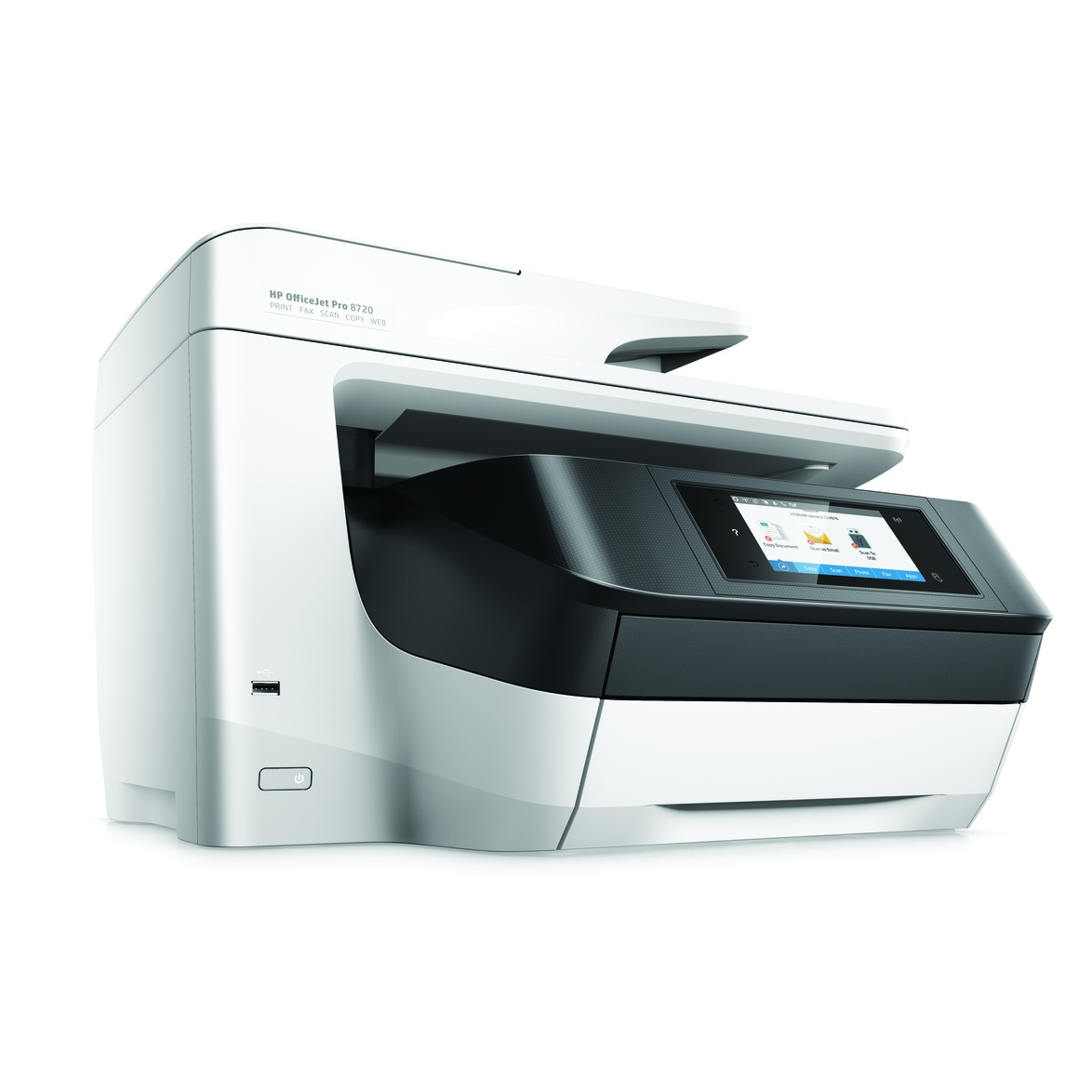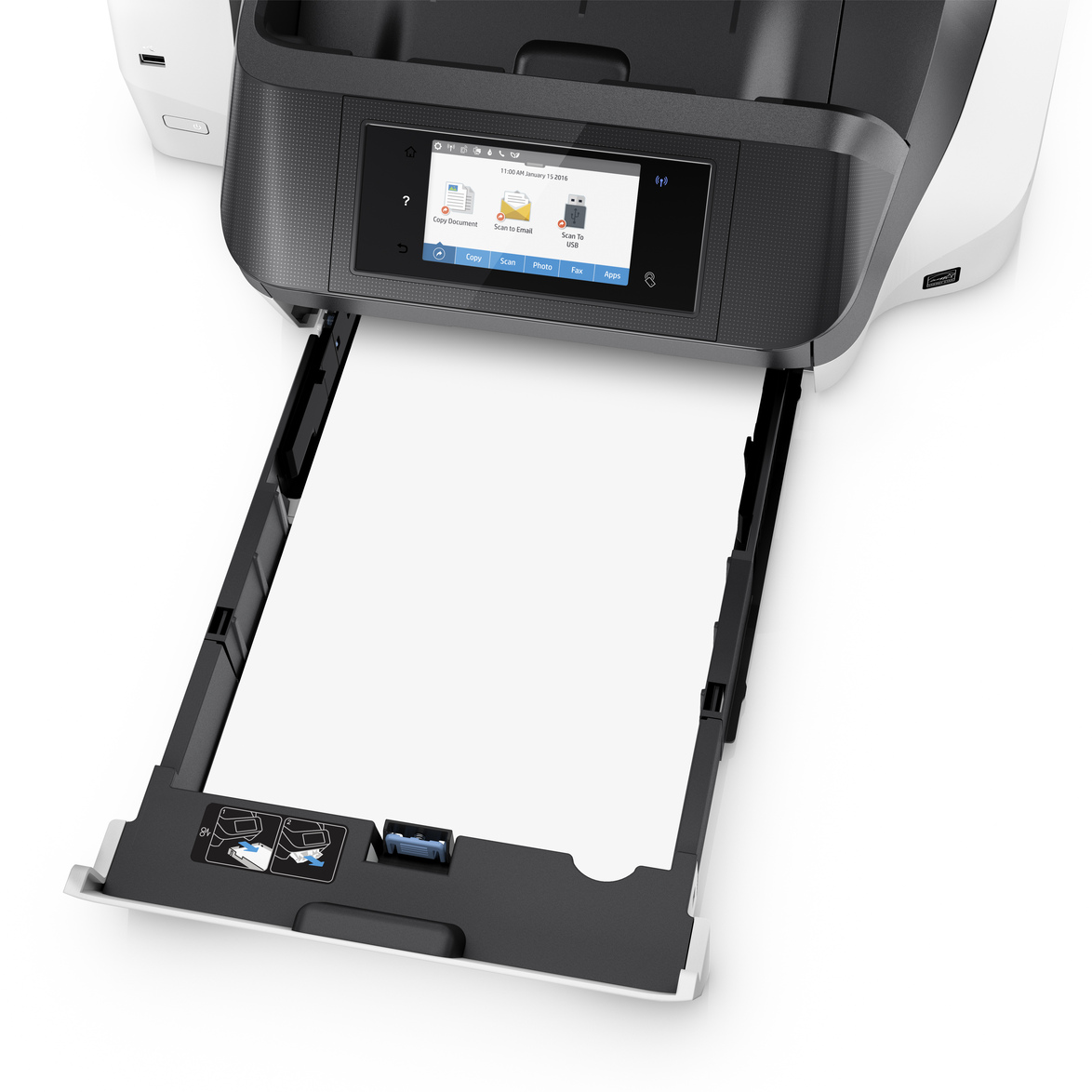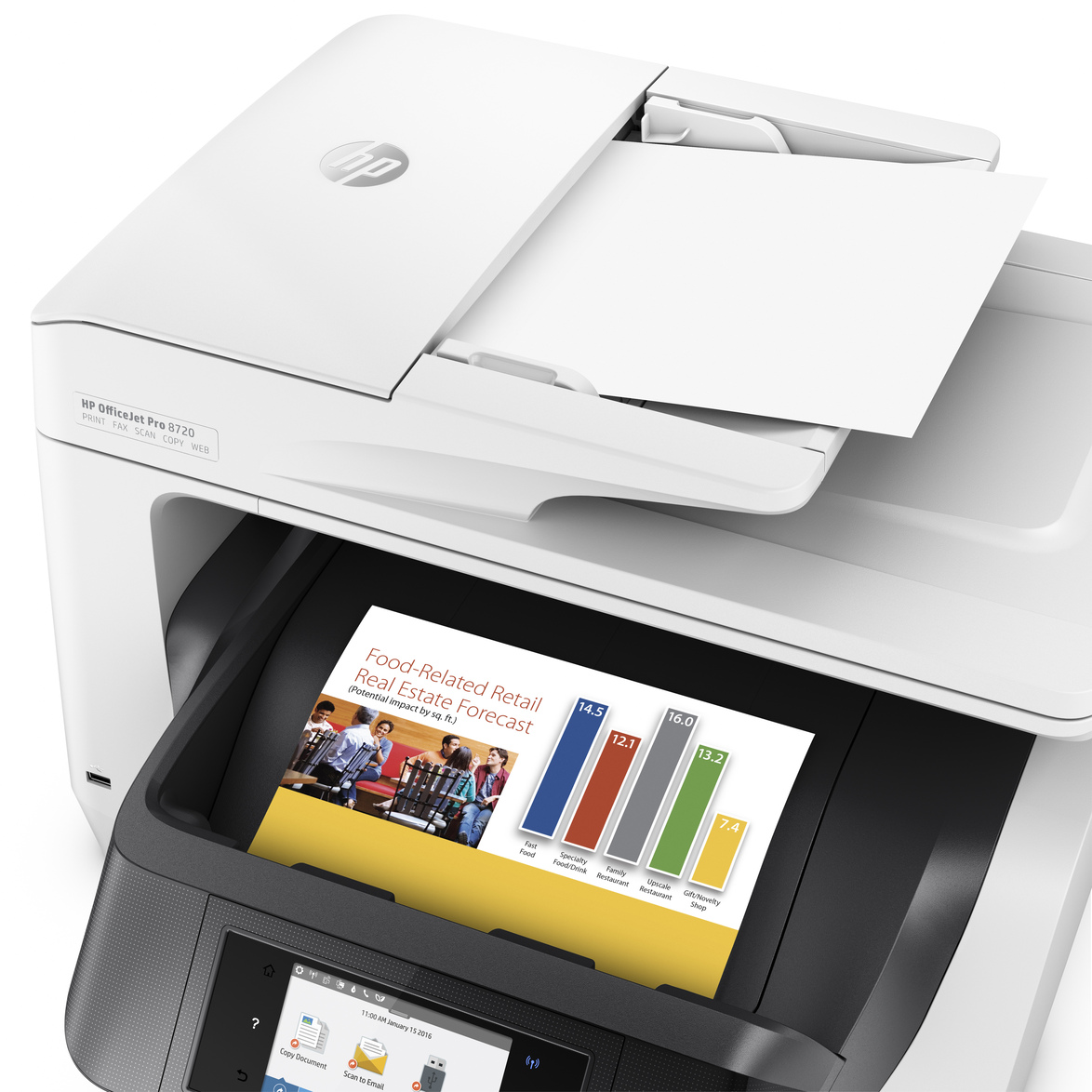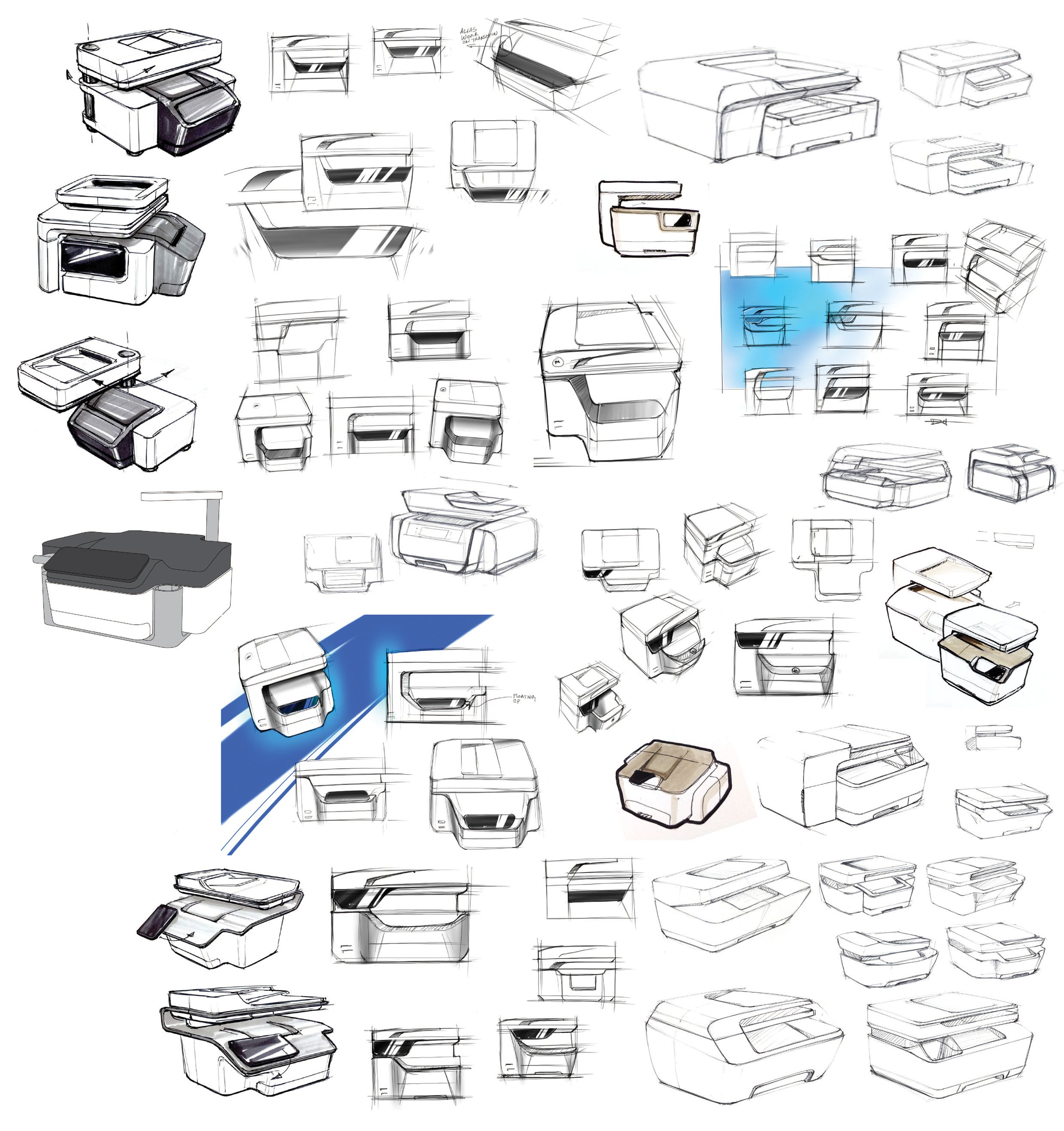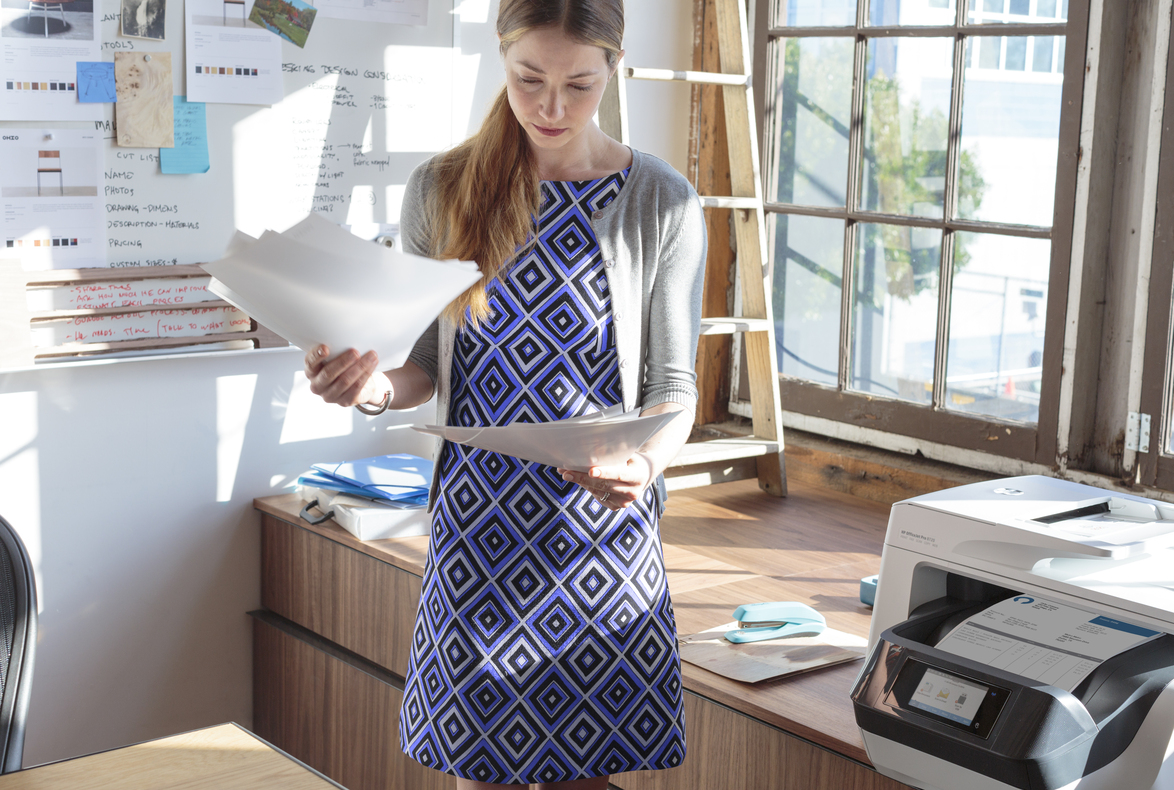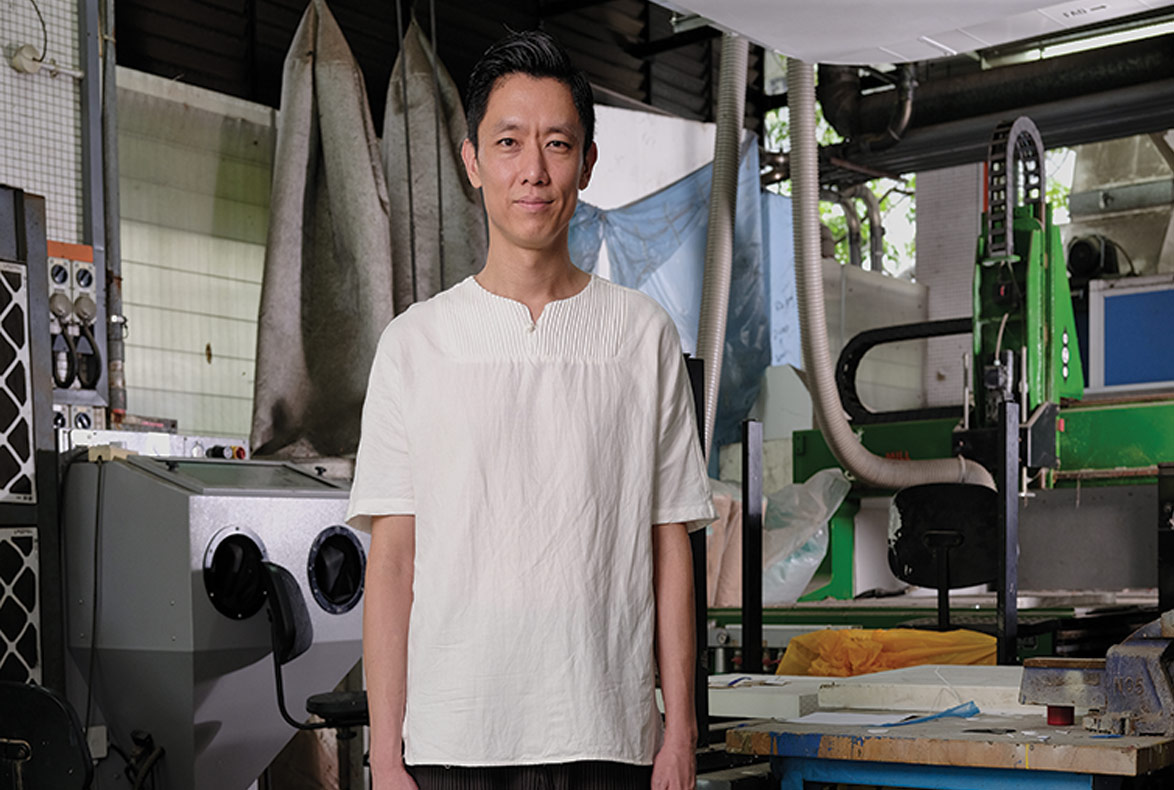DISCIPLINE
Product & Industrial Design
* DESIGN OF
THE YEAR 2016
HP Officejet Pro 8720 All-In-One Printer
HP Inc, Global Experience Design
(Singapore Studio)
HP OfficeJet Pro 8720 All-in-One Printer is a high-performing, high-speed inkjet printer that offers outstanding productivity. As working styles and workspaces evolve, both large and small businesses are seeking to maximise the workspace and give employees a work environment that stimulates creativity.
Through observations and insights, the designers learned that users dislike the protruding paper tray in printers because it takes up space. For that reason, HP developed a new Print Forward Design for the HP OfficeJet Pro 8720. Its designers rotated the chassis to fully contain the output tray, saving over 11cm in space while enabling efficient office printing.
An innovative paper path in the HP OfficeJet Pro printer allows for high-speed, two-sided printing at a speed similar to single-sided printing. When printing on a single side, the printed pages face down to provide greater protection for confidential information.
The printer, produced in light, neutral colours, is designed to blend into modern office environments while enabling users to print or scan more speedily.
READ MOREABOUT THE DESIGNER
Edwin Chin is an industrial designer with HP Inc, Global Experience Design (Singapore Studio). He graduated from Temasek Polytechnic with a diploma in product and industrial design in 2000 and went on to pursue his Bachelor of Design (Industrial Design) at Royal Melbourne Institute of Technology (RMIT). Since then, he has worked for Nakamichi, Motorola and HP, Inc. Global Experience Design (Singapore Studio).
Edwin’s work has garnered numerous honours including the Red Dot Design Award, IF Award, CES Innovation Award, Chicago Good Design Award, and Merit Award from Singapore Furniture Industry Council and Singapore Wearable Art. Edwin believes in utilizing customer insights to create relevant designs. He studies and appreciates trends and changing customer tastes, incorporating his findings in his designs.
READ MOREDESIGNER:
HP Inc, Global Experience Design
(Singapore Studio)
Edwin Chin and Team
ENGINEER:
HP Singapore IPS R&D
Insights from the Recipient
Citation
Jury Citation
Drawing on insights gathered from in-depth customer research, the design team at HP was able to perfect the ubiquitous office inkjet printer in the context of an extremely saturated market with similar product features.
By re-engineering the paper path, the design team extensively sped up the process of double-sided printing, while enabling the output sheets to emerge face down, thus ensuring confidentiality. Furthermore, the printing can be controlled via a mobile device. There are no clunky extendable parts to receive the prints and all troubleshooting is consolidated within the paper and cartridge feed area, making the printer very accessible and user-friendly.
The printer’s aerodynamic body is made of a plastic that is not spray-painted, thereby enabling recycling.
Although not a complete reinvention of an office printer, the 8720 is extremely well considered. Every effort has been made to ensure that this is as perfect as an office printer can be.
VIEW JURORSNominator Citation
Ramya Krishnan
Future Product Manager
HP Inc
Printing has always been a core communication technology, and its evolution in the 21st Century continues to complement our digital lives and intersect with the physical world.
HP printing business has an unrivalled depth and breadth of hardware, software, design, solutions and services that are designed to benefit any business, regardless of its size or specific needs. We have, once again, reinvented business printing with a new range of OfficeJet Pro printers that challenges the expectation of what a small office printer can be. HP defines and leads this category and the revolutionary Print Forward Design changes the rules of the game again with advancements that will fuel the next generation of innovators.
The new 8720 is a significant step forward that advances print technology, hardware design, user interaction and business model to meet the shifting needs of the customer, whilst adding value to their businesses.
HP has extended the aerodynamics of a car into the 8720 by accentuating its features and unobtrusively blending the whole into the modern workspace. In addition, the team has addressed customer observations of the hassle of manipulating the protruding output tray extension in contemporary business inkjet printers. HP has challenged this conventional form-factor and built a new Print Forward Design into the output tray.
The new design provides customers with greater productivity, high speeds for two-sided print and scan jobs, laser-like paper handling, and a space-saving design that preserves office real estate. Users can now save up to 11cm in operating space, and they no longer need to deal with damaged trays or scattered print-outs.

